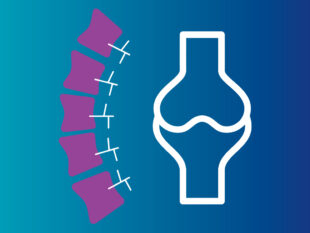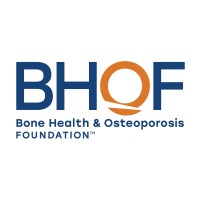Education & Training

Please join Paula Papanek, PH.D, Director of Sports and Exercise Analytics, Marquette University,... Show more
Please join Paula Papanek, PH.D, Director of Sports and Exercise Analytics, Marquette University, as she takes a comprehensive look at bone health in patients with chronic disease with focus on the effects of cancer treatment and the importance of monitoring patients post treatment into survivorship.
Learning Objectives:
1. Gain an understanding of bone health fundamentals and the overall consequences of osteoporosis.
2. Identify risk factors and vulnerable populations that are susceptible to bone loss and factures.
3. Learn strategies to prevent low bone density and why screening are so important, especially in high-risk population.
Takeaways:
1. Identify risk factors to screen for high risk patients.
2. Educate patients on ways to prevent low bone density.

Dual energy X-ray absorptiometry, or “DXA,” is quickly becoming a common tool for monitoring... Show more
Dual energy X-ray absorptiometry, or “DXA,” is quickly becoming a common tool for monitoring athletes, but inappropriate usage of the machine’s data can be dangerous. This webinar, hosted by the ACSM, will discuss how to acquire, understand and utilize DXA data for the benefit of your athletes while avoiding some key pitfalls.
Learning Objectives:
Better understand DXA procedures, including precision testing, timing/frequency, and special size considerations;
Be aware of best practices for DXA data- reporting for athletes and coaches as well as data extraction; and
Realize Understand how DXA data can be used to prevent muscle and bone injuries.
Presented by Bree Baker, Ph.D., CSCS
**Access the webinar Q&A from the live stream date on the ACSM website by clicking here

This video will review some of the more advanced and subtle aspects of osteoporosis, such as... Show more
This video will review some of the more advanced and subtle aspects of osteoporosis, such as management of severe osteoporosis, and diagnosis of atypical femur fractures.
LEARNING OBJECTIVES:
• Identify the role of fracture ascertainment in
densitometry, and in assessing severity of
osteoporosis
• Recognize when to screen for atypical femur
fractures
• Describe the basics of management of atypical
femur fractures
Presenter: Harold Rosen, MD

This webinar hosted by World Class CME was presented by Auryan Szalat, MD.
Upon completion of... Show more
This webinar hosted by World Class CME was presented by Auryan Szalat, MD.
Upon completion of this lecture, participants will be able to:
1) Accurately use DXA scan and FRAX to diagnose osteoporosis and classify risk fracture
2) Accurately use DXA scan, TBS and TBS-adjusted FRAX to diagnose osteoporosis and classify risk fracture
3) Appropriately request a VFA and/or a single energy femur analysis for specific patients
Credit: 1 AMA PRA Category 1 Credit™
1 Category A CE Credit

Join Dr. Michael Ormsbee, a Professor and Graduate Program Director in the Department of... Show more
Join Dr. Michael Ormsbee, a Professor and Graduate Program Director in the Department of Nutrition & Integrative Physiology as well as the Associate Director of the Institute of Sports Sciences & Medicine at Florida State University, as he discusses the updates on normal weight obesity and body composition index using DXA. Webinar awards 1 CDR CPEU credit.
Objectives:
Conceptualize the concept of normal weight obesity in athletes and how DXA is used to identify this issue
2. Discuss the use of DXA to measure body composition index in order to identify improvements in body composition
3. Identify how dietary intake and training may assist in improving body composition index and normal weight obesity
(57:12)

This video will address the use of DXA for Body Composition Analysis, in particular that of fat... Show more
This video will address the use of DXA for Body Composition Analysis, in particular that of fat mass and fat compartments and lean mass. We will address clinical uses for DXA body composition including the assessment of sarcopenia, metabolic syndrome and cachexia (cancer, cardiac, pulmonary, etc.) We will look at some case studies of body composition analysis used to follow clinical progression of disease. Finally we will also briefly address the use of body composition analysis in the pediatric/adolescent population.
Speaker: Dr. Vyvyane Loh, CEO & Medical Director, Transform Alliance for Health, Newton, Massachusetts, USA

This activity presented by Harold N. Rosen, MD, is designed to address the following core... Show more
This activity presented by Harold N. Rosen, MD, is designed to address the following core competencies: Patient Care and Medical Knowledge.
LEARNING OBJECTIVES
• The attendee will learn to identify which patients to
select for bone density
• The attendee will learn to identify which patients to
select for screening for vertebral fractures with VFA
• The attendee will learn to identify which patients to
select for screening for atypical femur fracture with
full-length femur imaging
• The attendee will recognize which patients should
be treated for osteoporosis, and among them, those
who should begin first with anabolic treatment
• The attendee will learn to describe the different
treatment options for osteoporosis

An impressive new multimedia resource created by American Bone Health for people with osteoporosis,... Show more
An impressive new multimedia resource created by American Bone Health for people with osteoporosis, their families and caregivers, as well as health care providers and educators. It’s called “You and Osteoporosis: An Animated Patient’s Guide to Bone Health and Osteoporosis.” This resource features easy-to-understand animations with audio narration, interviews with leading experts, personal stories of people with osteoporosis, and materials you can download for reference.
This resource was supported by an unrestricted educational grant by Hologic

Dr. Abbie Smith-Ryan discusses the use of DXA to understand the physiological effects of quarantine... Show more
Dr. Abbie Smith-Ryan discusses the use of DXA to understand the physiological effects of quarantine and remote learning during COVID-19. This educational webinar is sponsored by Hologic and hosted by the CPSDA.
Learning Objectives:
1. Discuss use of DXA as a foundational sports science piece for ensuring optimal health and performance of athletes, particularly during COVID.
2. Identify practical ways to use technology for tracking and return to play considerations for athletes
3. Understand the practical application of body composition technology for use in sport science
Presented by CPSDA
This program is eligible for 1.0 CPEU.

In this module, Dr. Abbie Smith-Ryan explains how tracking body composition with the Horizon DXA... Show more
In this module, Dr. Abbie Smith-Ryan explains how tracking body composition with the Horizon DXA system, particularly for female athletes, can be helpful beyond performance.

Click the "register" button below to be directed to Hologic's Customer Support Portal for... Show more
Click the "register" button below to be directed to Hologic's Customer Support Portal for additional resources related to your equipment installation and training process.
Knowledgebase
Access the knowledgebase to search for technical tips, frequently asked questions.
Manuals
Access and download Hologic product manuals such as User Guides, Service manuals, and QC manuals
Service Requests
Submit and track the progress of your support cases. Schedule preventive maintenance and get updates on your service appointments.
Systems
View system details and entitlement information for your Hologic systems.
Reports
Download Field Service Reports and Customer Service Reports for your resolved cases and access analytical data for your systems.
Training and Professional Services
Request clinical training as well as workflow and connectivity professional services.

A virtual session presentation by Dr. Kathryn Ackerman discussing low energy availability and... Show more
A virtual session presentation by Dr. Kathryn Ackerman discussing low energy availability and eating disorders and how to use the DXA in treatment of athletes.
Key takeaways include:
- Describe athlete-specific interpretation of bone density measurements via DXA
- Discuss ways body composition from DXA can be helpful in eating disorder treatment in athletes
- Discuss utility of body comp Z-scores for resumption of menses in amenorrheic athletes
Click the image above to register
Presented by CPSDA
This program is eligible for 1.0 CPEU.
Page 1 of 2
